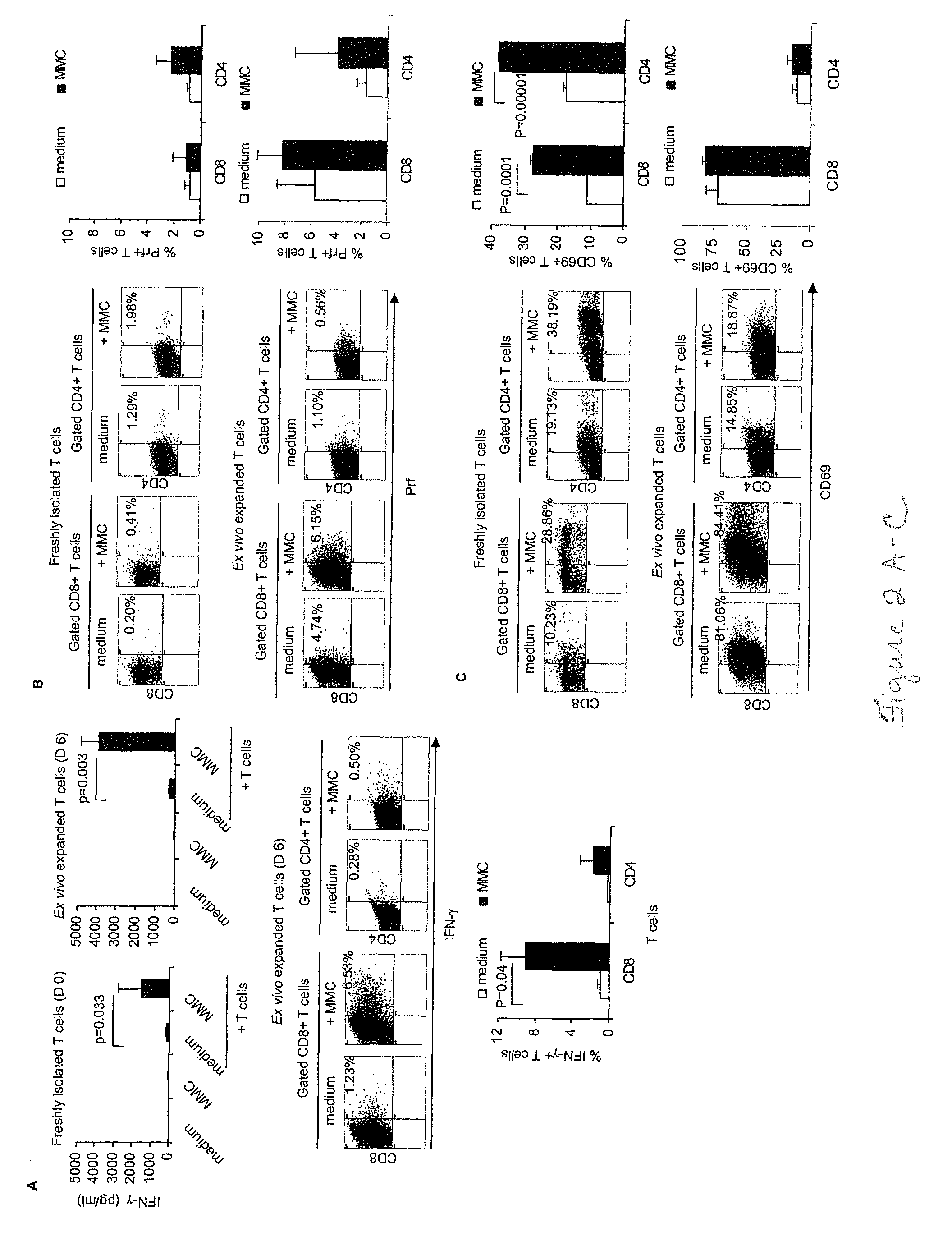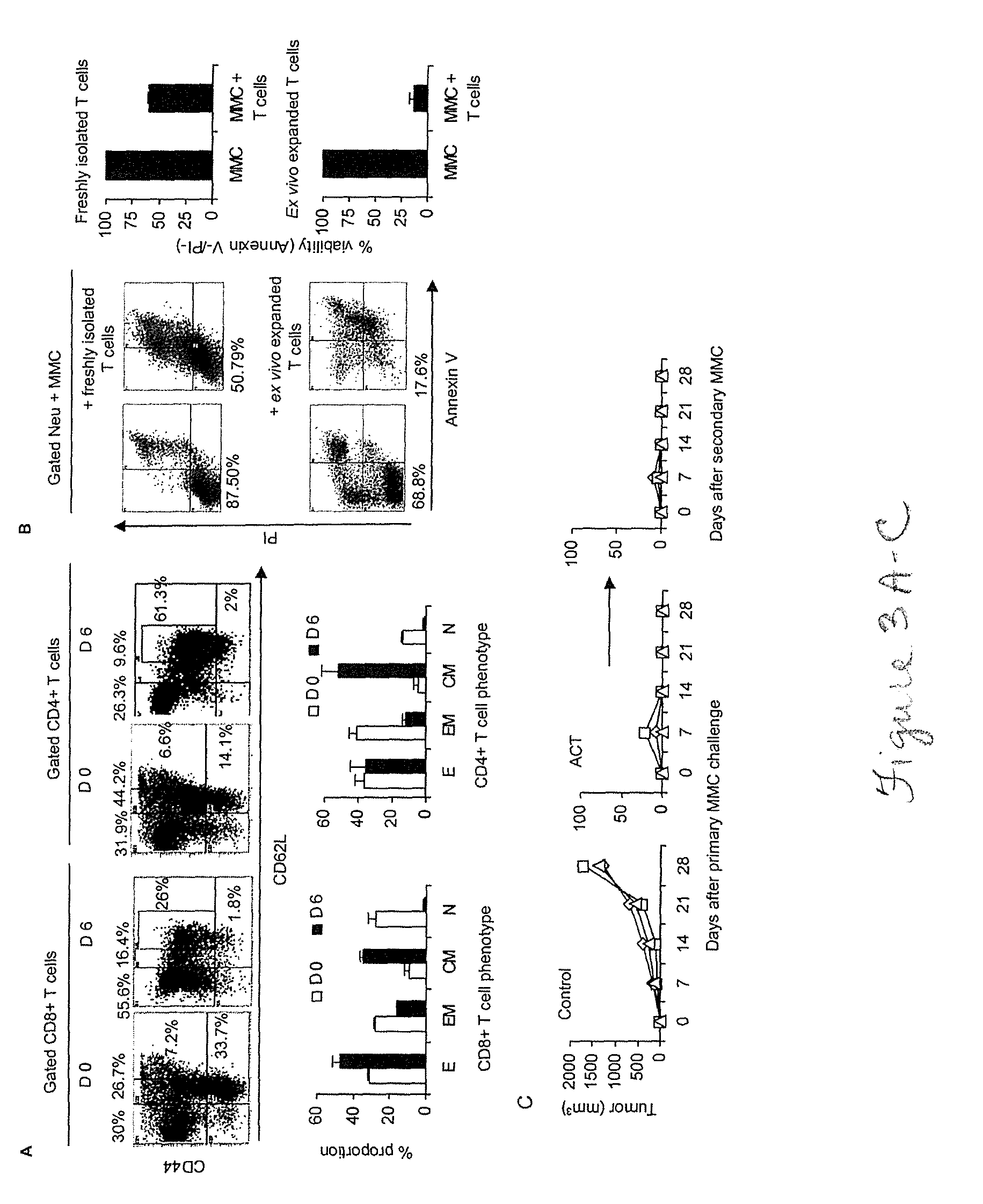Methods for producing autologous immune cells resistant to myeloid-derived suppressor cells effects
a technology of suppressor cells and autologous immune cells, which is applied in the field of ex vivo generation of t cells, can solve the problems of already altered immune systems and accrual of patients, and achieve the effect of being suitable for use in the a
- Summary
- Abstract
- Description
- Claims
- Application Information
AI Technical Summary
Benefits of technology
Problems solved by technology
Method used
Image
Examples
example 1
[0044]Attempts to cure breast cancer by means of adoptive cellular therapy (ACT) have not been successful. This is primarily due to the presence of tumor-induced immune suppressive mechanisms as well as the failure of tumor-reactive T cells to provide long-term memory responses in vivo. In order to address these clinically important challenges an ex vivo protocol has been developed for the expansion of tumor-reactive immune cells obtained from tumor-bearing animals prior to or after local radiation therapy. An antigen-free protocol which included bryostatin 1 / ionomycin (B / I) and sequential common gamma-chain cytokines (IL-7 / IL-15+IL-2) was employed. The protocol expanded tumor-reactive T cells as well as activated non-T cells, including NKT cells, NK cells and IFN-γ producing killer dendritic cells (IKDC) (Among these cells, T cells and NKT cells are important components of an effective ACT). Anti-tumor efficacy of T cells depended on the presence of non-T cells. The effector non-T ...
PUM
| Property | Measurement | Unit |
|---|---|---|
| time | aaaaa | aaaaa |
| temperature | aaaaa | aaaaa |
| concentration | aaaaa | aaaaa |
Abstract
Description
Claims
Application Information
 Login to View More
Login to View More - R&D
- Intellectual Property
- Life Sciences
- Materials
- Tech Scout
- Unparalleled Data Quality
- Higher Quality Content
- 60% Fewer Hallucinations
Browse by: Latest US Patents, China's latest patents, Technical Efficacy Thesaurus, Application Domain, Technology Topic, Popular Technical Reports.
© 2025 PatSnap. All rights reserved.Legal|Privacy policy|Modern Slavery Act Transparency Statement|Sitemap|About US| Contact US: help@patsnap.com



